Miles of opportunity. All leading to Union Station.
When you move millions of people across tens of thousands of miles of railway, there’s opportunity everywhere.
And it starts, ends, and starts again at Chicago’s Union Station.
The Nation’s Railway Hub.
Today: Direct service to 375 cities and towns in 36 states.
Tomorrow: 43 million people within 3 hours by high-speed train.
Over 300 daily trains radiate from Chicago Union Station’s tidy two square blocks, across the country. Trains to the coasts line up side by side with trains to the suburbs.
Add a dozen high-speed trains per hour, and Chicago Union Station would become one of the most versatile and impactful transportation centers in the nation.
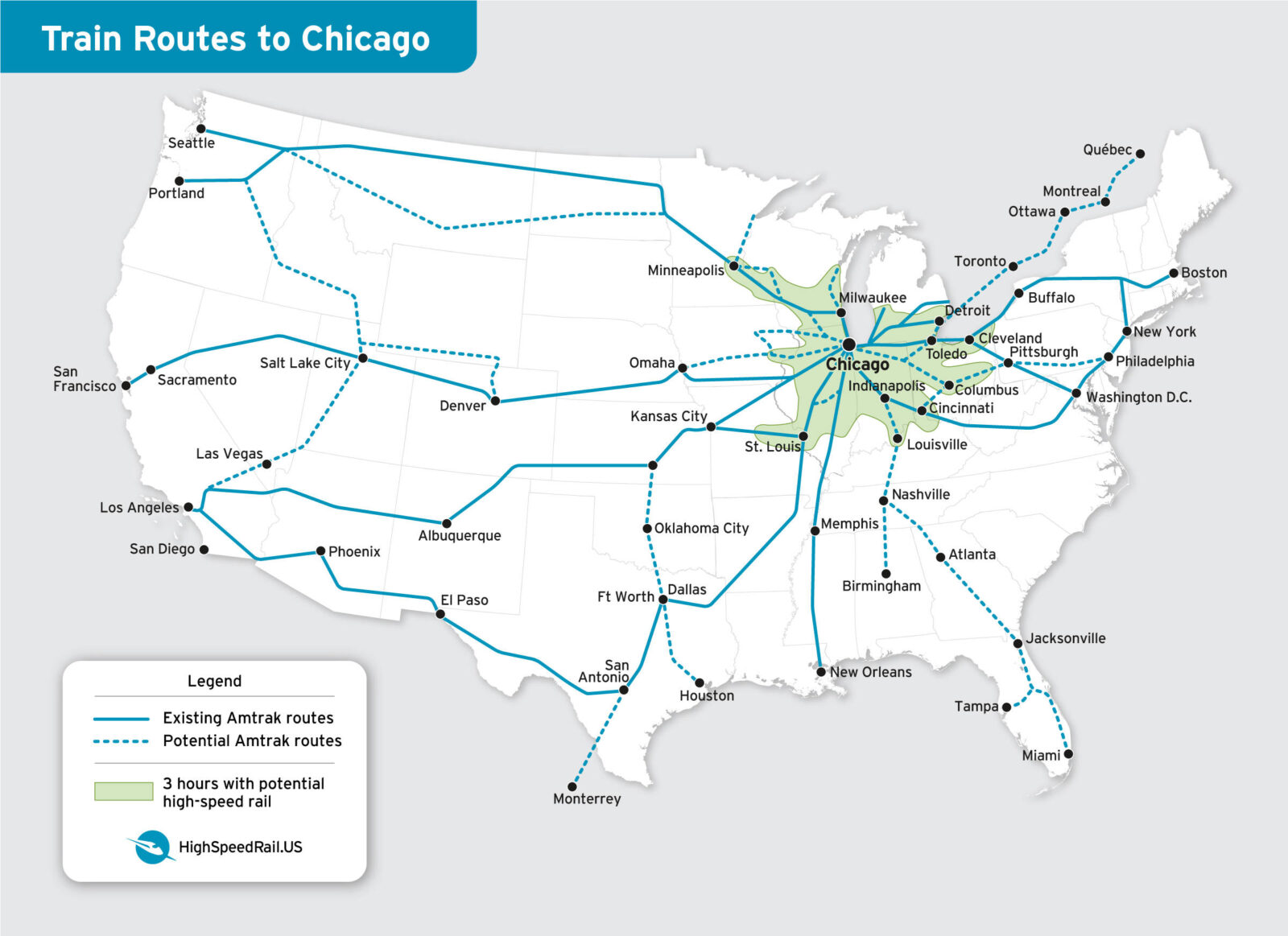
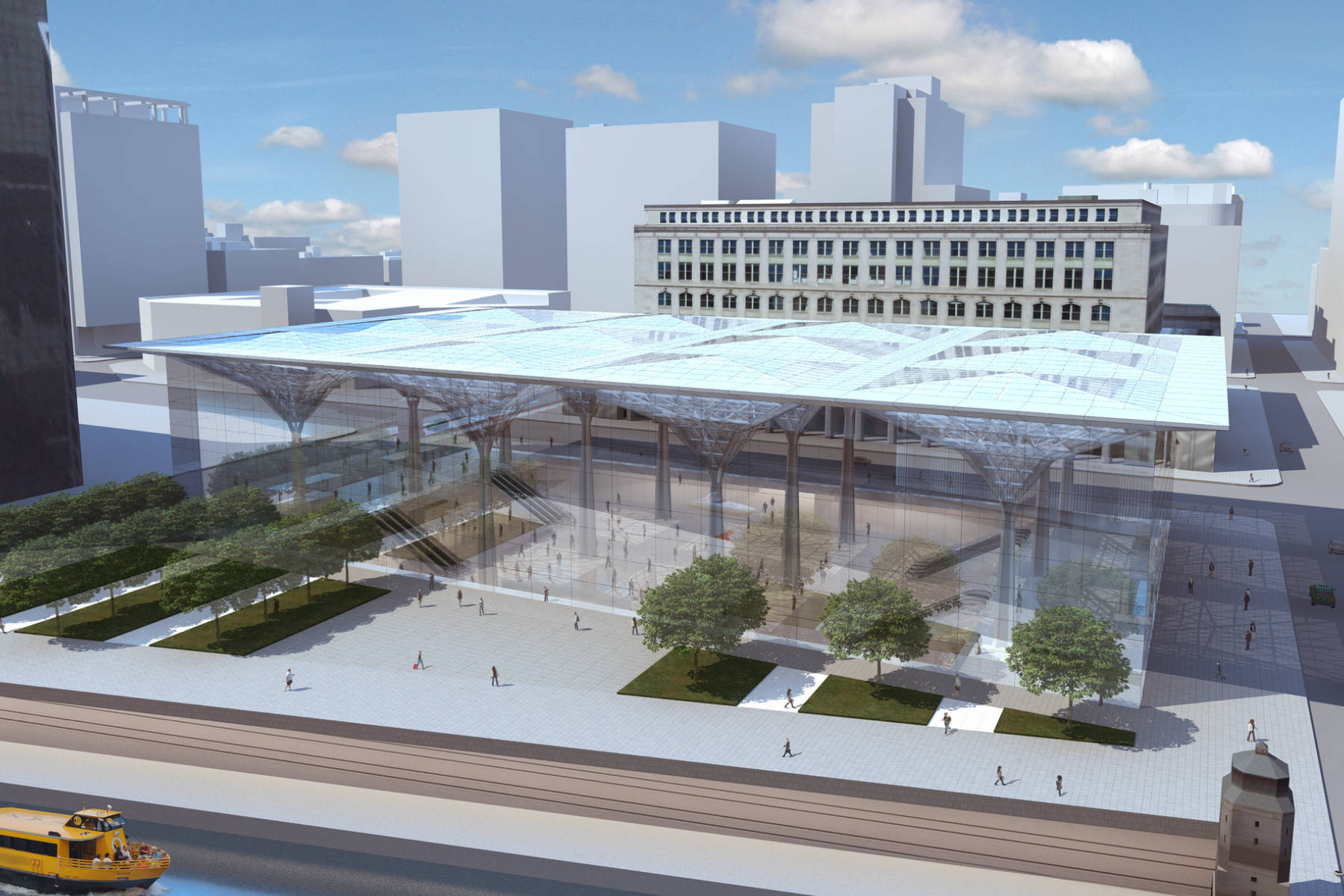
Right now, there’s a world of potential
One where millions of travelers pass through the station, connecting families, universities, and businesses across the region.
A world that builds economies from the Loop to the Atlantic and Pacific and back.
To achieve this, the station must be re-imagined.
Five essential fixes at Chicago Union Station
Amtrak, the City of Chicago, and Illinois should plan for a 10-fold increase in traffic. This is how to get there.
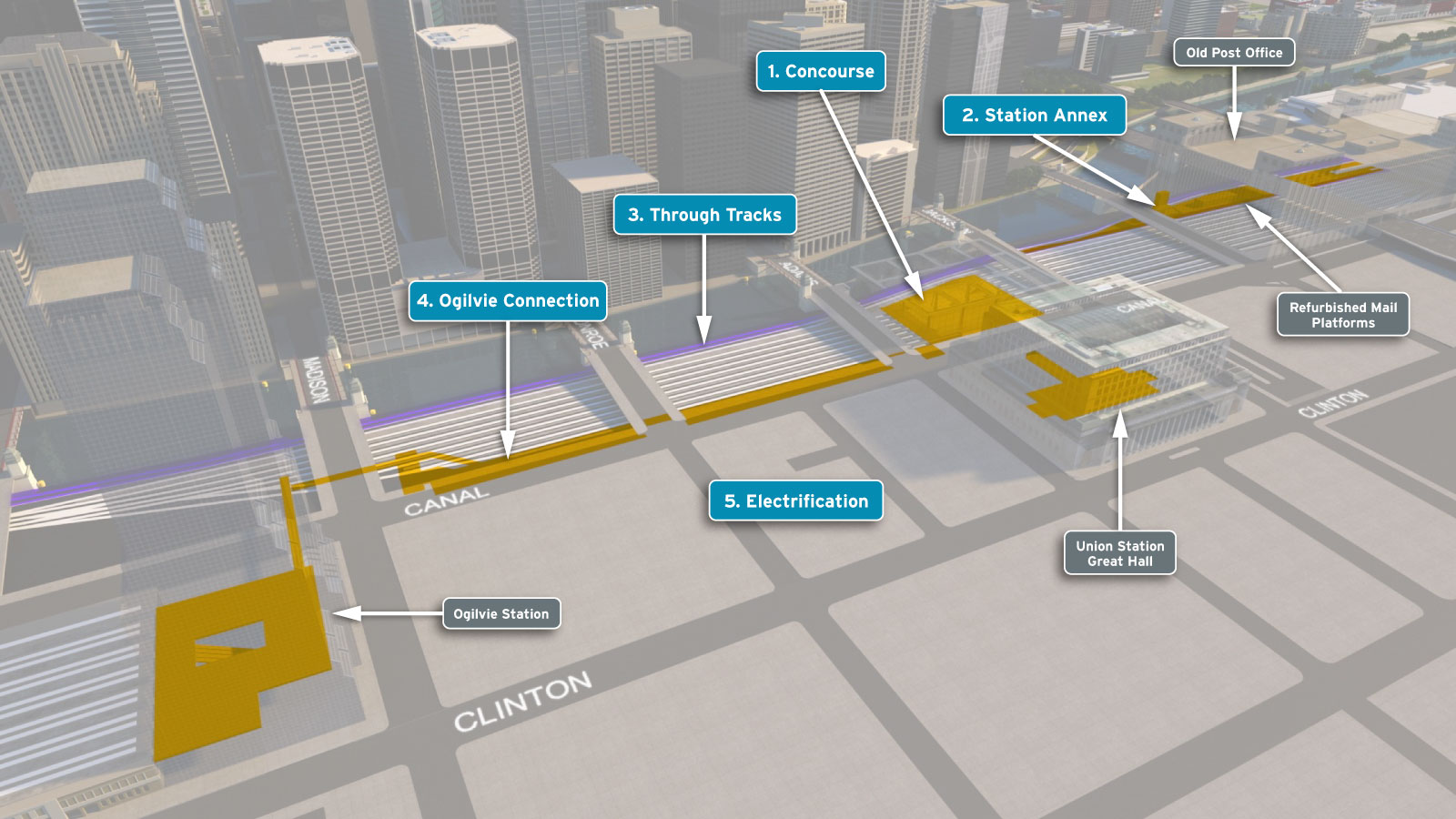
1. New Concourse
Easy access to trains.
Removing the buildings above the concourse would open up the space, making it easier to get to and from trains, through the station, and to the street.
This redesign would result in a prominent, iconic public area that celebrates both the city and modern train travel.
Status: Amtrak is currently designing concourse improvements that attempt to work around the many columns that support the existing buildings above it.
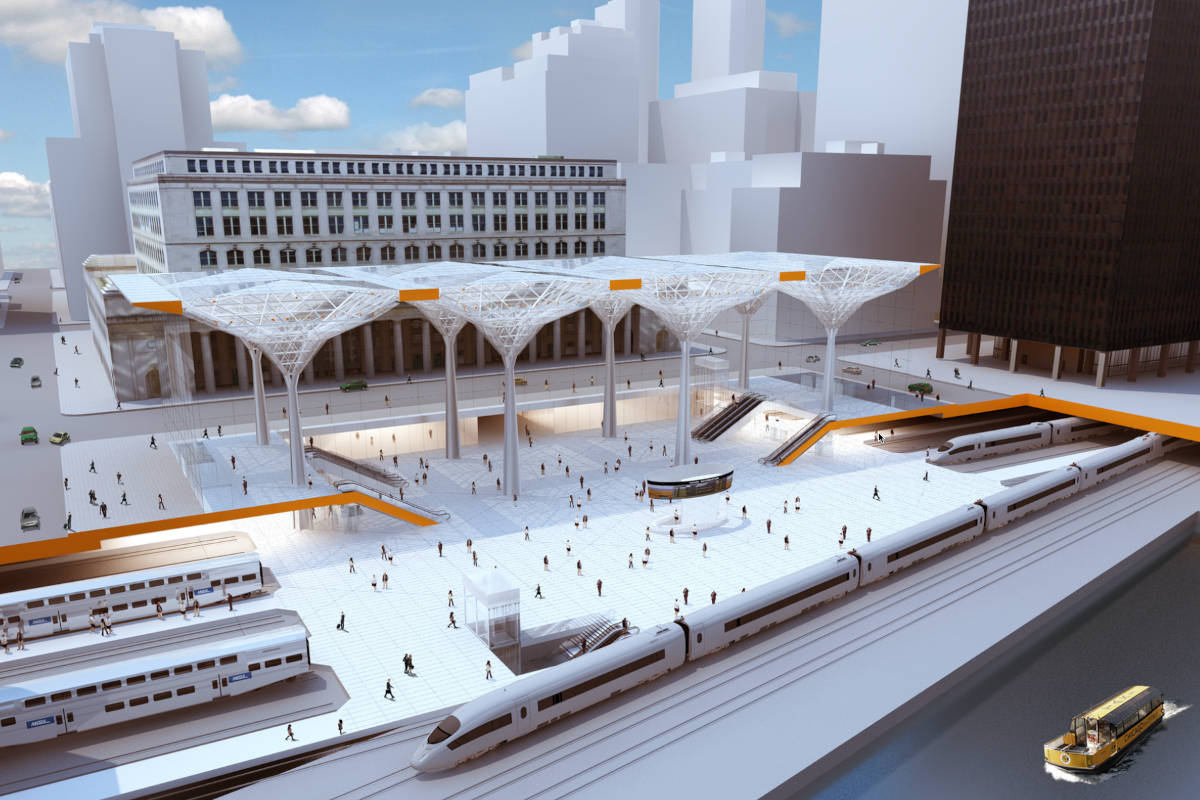
The buildings above the concourse should be removed to create an open, light-filled, and easy-to-navigate public space.
2. Station Annex
A direct entrance from Van Buren.
Converting the large mail platforms beneath the Old Post Office will significantly increase capacity, enable level boarding, and facilitate through-running. However, these platforms are not currently connected to the concourse.
To fully capitalize on the new platforms, a direct entrance through the Old Post Office is essential. The large and beautiful lobby of the building is perfectly situated as this new gateway.
Status: Amtrak has begun converting the mail platforms for passenger use, but their proposed route to it from the concourse would be both inconvenient and time-consuming. Amtrak indicates that a direct entrance may be included in a future phase of development.
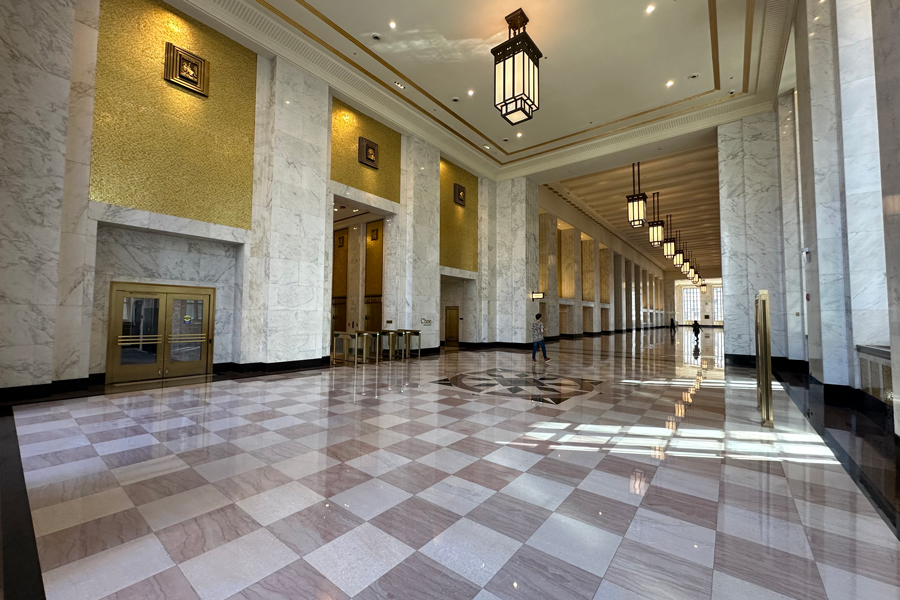
The lobby of Chicago’s Old Post Office building would be a great entrance to the new platforms below.
3. Through Running
Through the city, across the Midwest, and beyond.
Today, trains start or end their journeys at Union Station. Through running would enable crosstown Metra service and make routes like Indianapolis–Madison possible. This improvement would also provide direct service to O’Hare from hundreds of cities and towns across the Midwest.
Status: Rebuilding the mail platforms is a significant step forward. Amtrak and Metra are working on initial designs for more extensive through-running capabilities.
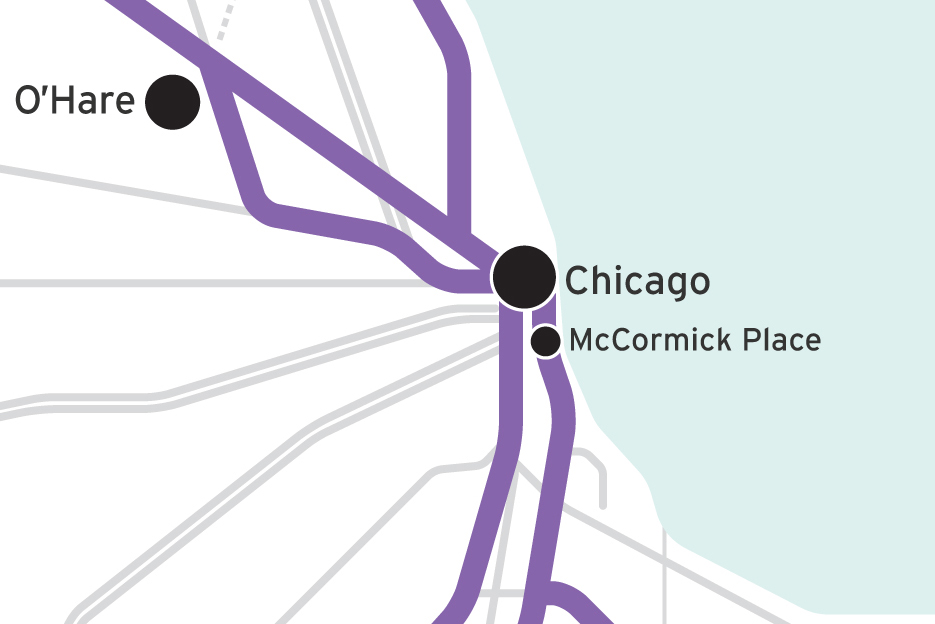
Running trains through the station would create single seat rides for hundreds of city-pair combinations across the Midwest.
4. Ogilvie Station Connection
Two stations working together as one.
Union Station and Ogilvie station are only three blocks apart – closer than some airport terminals. An indoor connection would streamline transfers between them and open up opportunities for new service expansions.
Status: Initial designs have been completed, but Amtrak has opted not to pursue this critical connection at this time.
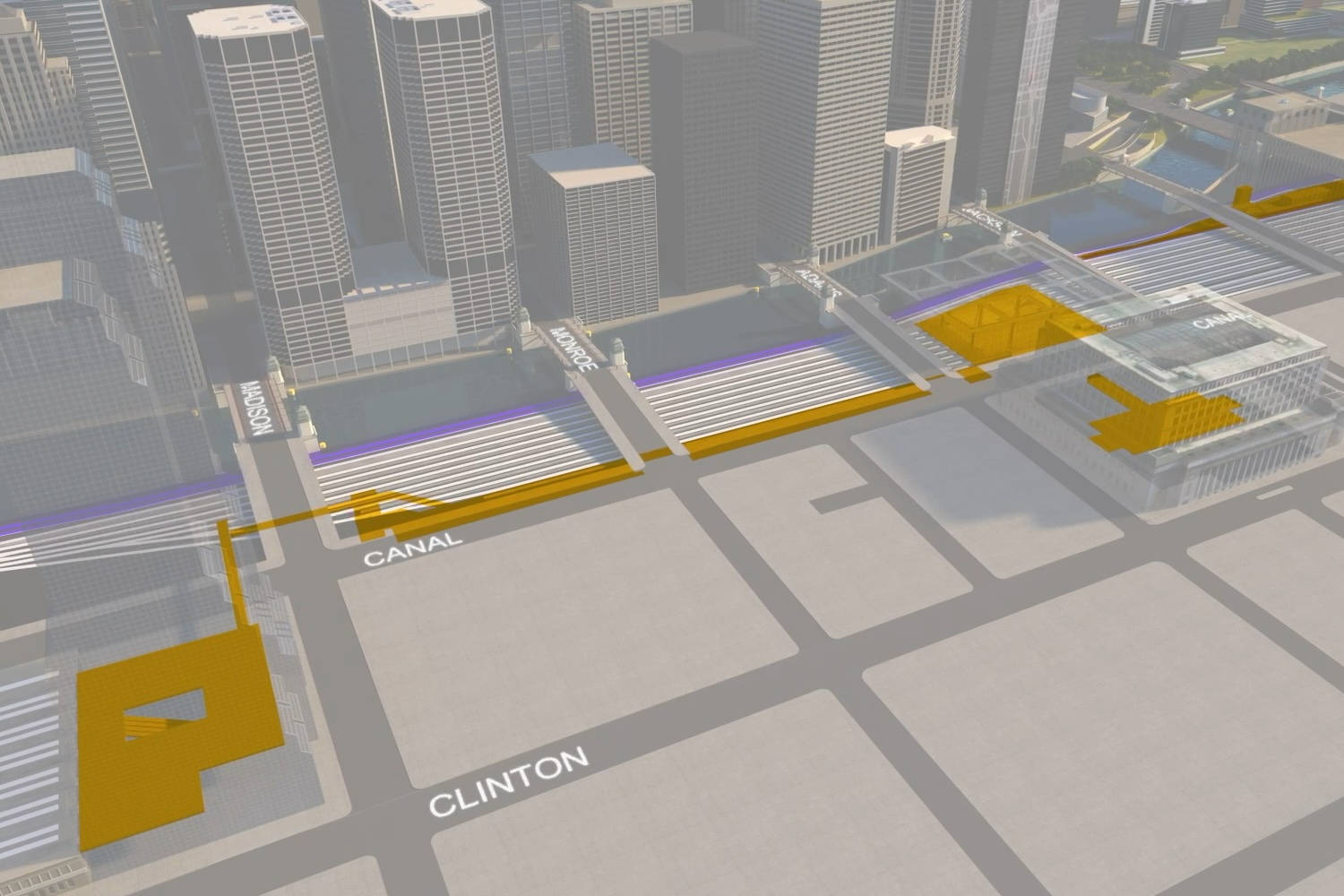
An enclosed walkway between Chicago Union Station and Ogilvie Station would provide an all-weather connection for transfers between hundreds of daily trains.
5. Electrification
Faster, cheaper, cleaner, safer trains.
Union Station is plagued by smoke from diesel engines. Modern electric trains would change all that. They are not only cleaner, but also faster and safer. They’re cheaper to operate long-term, potentially lowering fares. Investing in rail electrification means investing in cleaner air, economic growth, and a more connected future. And, electrification is required for high-speed trains.
Status: Amtrak and Metra are not pursuing electrification at this time.
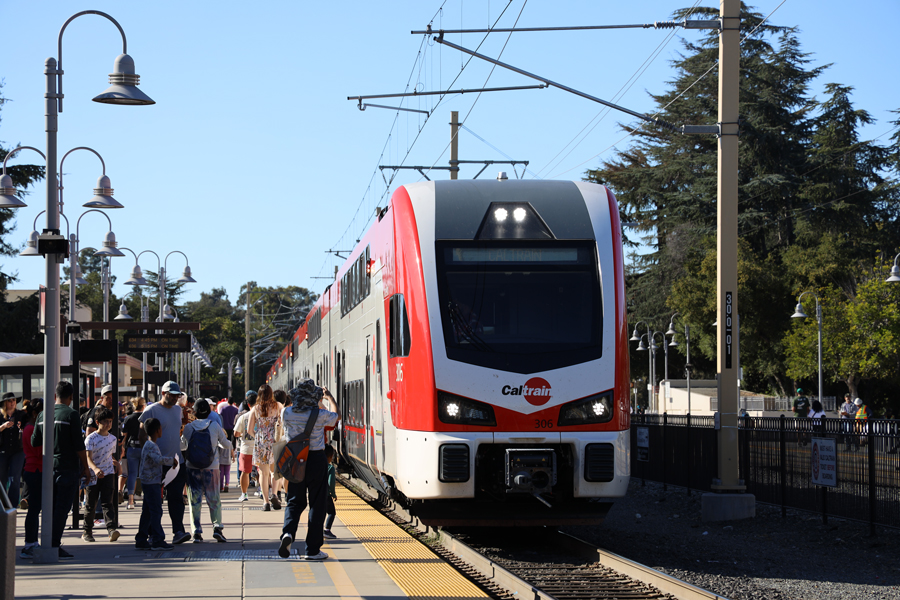
Caltrain recently replaced diesel trains with electric, cutting 25 minutes from the trip time.
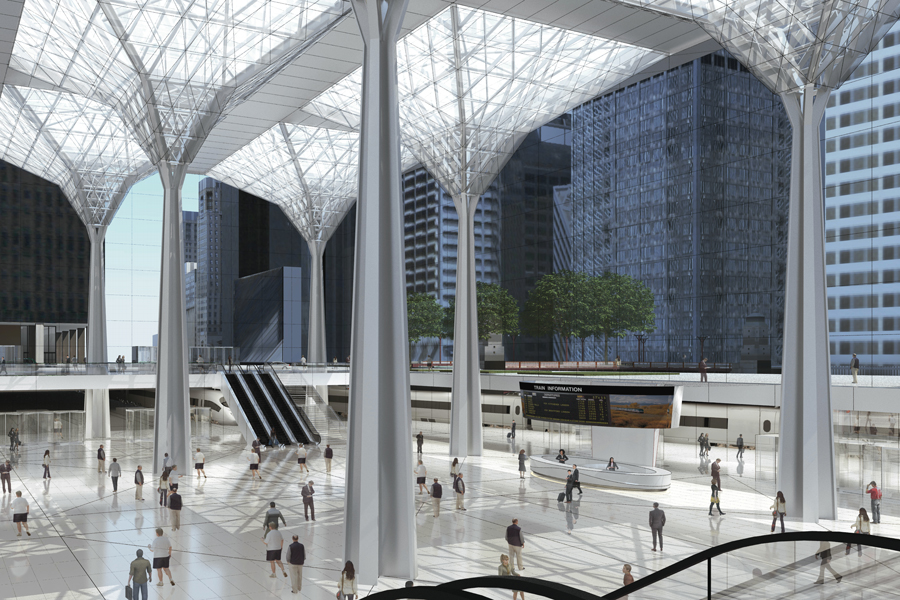
Join the Movement
Let’s build a monument in transportation at Union Station. Thousands of people are on board. Join us and make it a reality.
